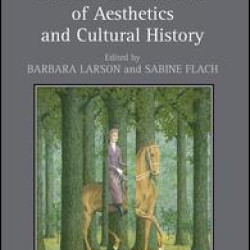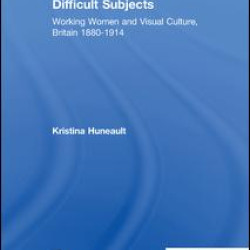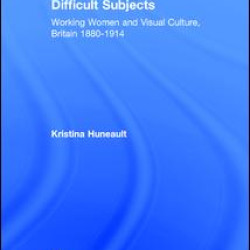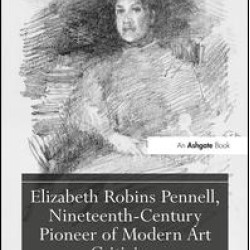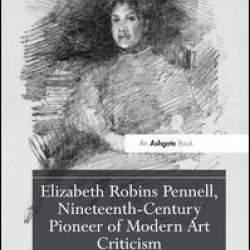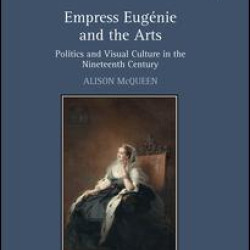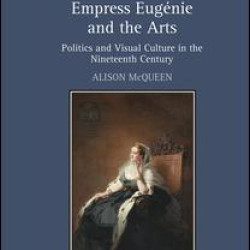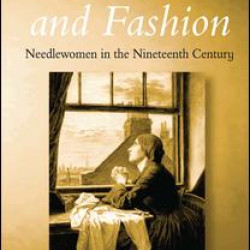19th Century Modern Art
Brand: Taylor & Francis
Model: Stock
Beyond the world fairs in London, Paris or Chicago, numerous smaller, ambitious exhibitions took place in provincial cities and towns worldwide. This volume takes a novel look at the exhibitionary cultures of the period 1840-1940. By examining the motivations, scope, and impact of lesser-known exhib..
₹6,902.62 ₹8,628.28
Brand: Taylor & Francis
Model: Stock
Darwin and Theories of Aesthetics and Cultural History is a significant contribution to the fields of theory, Darwin studies, and cultural history. This collection of eight essays is the first volume to address, from the point of view of art and literary historians, Darwin's intersections with aesth..
₹8,812.80 ₹11,016.00
Brand: Taylor & Francis
Model: Stock
The working women of Victorian and Edwardian Britain were fascinating but difficult subjects for artists, photographers, and illustrators. The cultural meanings of labour sat uncomfortably with conventional ideologies of femininity, and working women unsettled the boundaries between gender and class..
₹2,569.66 ₹3,212.08
Brand: Taylor & Francis
Model: Stock
The working women of Victorian and Edwardian Britain were fascinating but difficult subjects for artists, photographers, and illustrators. The cultural meanings of labour sat uncomfortably with conventional ideologies of femininity, and working women unsettled the boundaries between gender and class..
₹7,711.20 ₹9,639.00
Brand: Taylor & Francis
Model: Stock
Mining various archives and newspaper repositories, Morse Jones provides the first full-length study of this remarkable woman. Pennell, a 'New Art Critic', helped develop formalist methodology in Britain, which she applied to her mostly anonymous or pseudonymous reviews. Pennell used her platform to..
₹6,535.42 ₹8,169.28
Brand: Taylor & Francis
Model: Stock
Mining various archives and newspaper repositories, Morse Jones provides the first full-length study of this remarkable woman. Pennell, a 'New Art Critic', helped develop formalist methodology in Britain, which she applied to her mostly anonymous or pseudonymous reviews. Pennell used her platform to..
₹2,789.98 ₹3,487.48
Brand: Taylor & Francis
Model: Stock
Reconstructing Empress Eugénie's position as private collector and public patron, this study is the first to examine Eugénie (1826-1920) in these roles. Her patronage and collecting is considered within the context of her political roles in the development of France's institutions and international ..
₹8,812.80 ₹11,016.00
Brand: Taylor & Francis
Model: Stock
Reconstructing Empress Eugénie's position as private collector and public patron, this study is the first to examine Eugénie (1826-1920) in these roles. Her patronage and collecting is considered within the context of her political roles in the development of France's institutions and international ..
₹8,812.80 ₹11,016.00
Brand: Taylor & Francis
Model: Stock
Reconstructing Empress Eugénie's position as private collector and public patron, this study is the first to examine Eugénie (1826-1920) in these roles. Her patronage and collecting is considered within the context of her political roles in the development of France's institutions and international ..
₹3,083.74 ₹3,854.68
Brand: Taylor & Francis
Model: Stock
The fifteen articles in this book address the appearance of the nineteenth-century seamstress as a 'real' figure in the changing economies of nineteenth-century Britain, America, and France, and as an important cultural icon in the art and literature of the period. It assembles the work of leading ..
₹3,083.74 ₹3,854.68
Brand: Taylor & Francis
Model: Stock
The fifteen articles in this book address the appearance of the nineteenth-century seamstress as a 'real' figure in the changing economies of nineteenth-century Britain, America, and France, and as an important cultural icon in the art and literature of the period. It assembles the work of leading ..
₹7,711.20 ₹9,639.00



